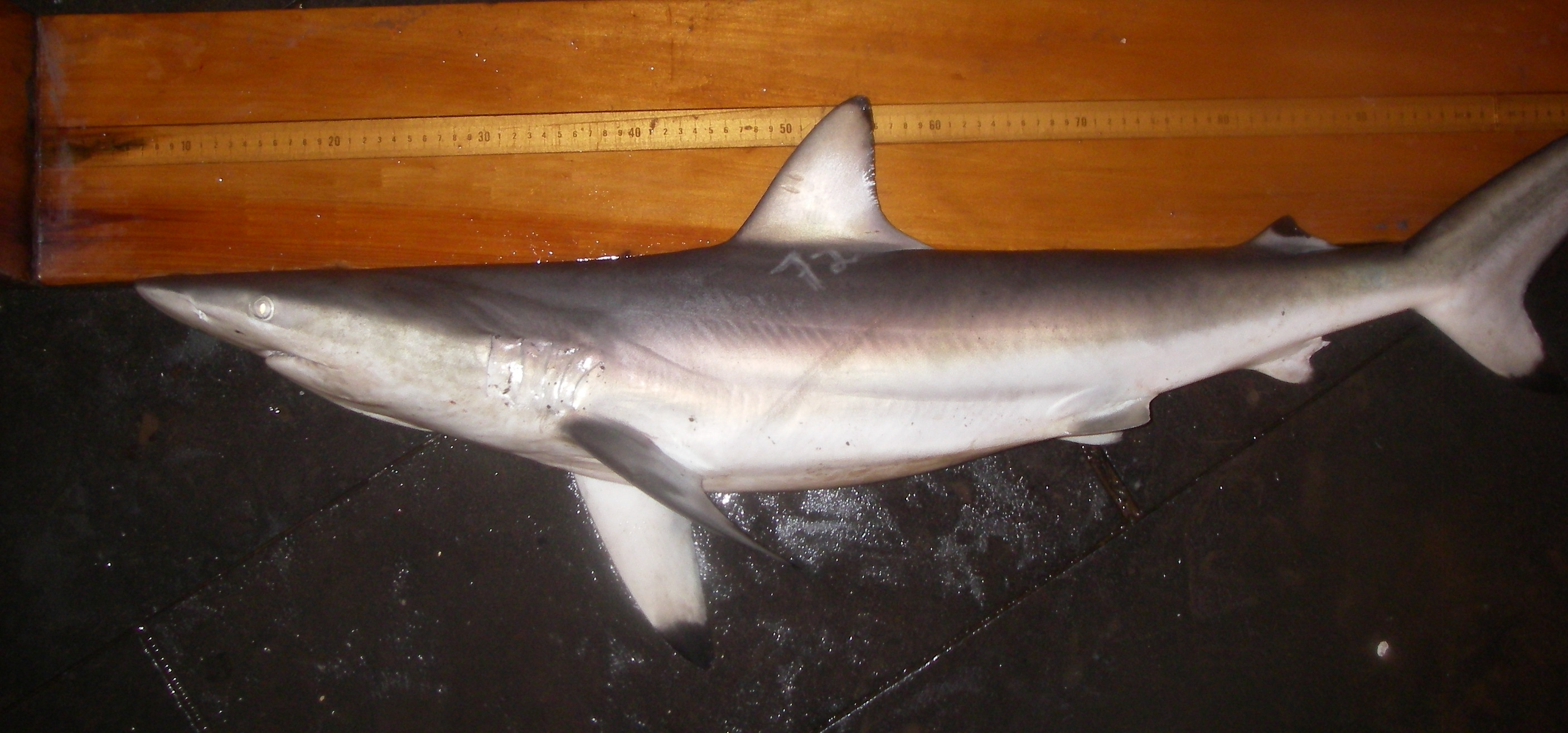|
Scoliodon
''Scoliodon'' is a genus of requiem sharks in the family Carcharhinidae. It was formerly thought to include only a single Indo-Pacific species, the spadenose shark (''S. laticaudus''), but recent taxonomic research has found an additional species, the Pacific spadenose shark (''S. macrorhynchos''). Location The ''Scoliodon'' genus of sharks has been found mainly in the Indo-West Pacific oceans from the west coasts of Africa to south of Japan. Biology ''Scoliodon'' has an elongated, spindle-shaped body tapered at the ends, making it a very fast swimmer. The trunk and tail are laterally compressed, while the head region is dorsoventrally compressed. The entire body is covered by an exoskeleton of placoid scales. The mouth is located on the ventral side and is bound on both sides by jaws. It has two rows of homodont or polyphyodont teeth, which are homologous to the placoid scales A fish scale is a small rigid plate that grows out of the skin of a fish. The skin of most j ... [...More Info...] [...Related Items...] OR: [Wikipedia] [Google] [Baidu] |
Scoliodon Laticaudus
The spadenose shark (''Scoliodon laticaudus'') is a species of requiem shark in the family Carcharhinidae. It is common in the tropical Indian and western Pacific Oceans, where it forms large schools in shallow water. A small shark reaching a length of , the spadenose shark is named for its distinctively flattened, triangular snout. It is a predator of small bony fishes and invertebrates. This species exhibits the most advanced mode of viviparity of any fish, in which the developed embryos form a highly complex placental connection to the mother at a very small size. Females breed year-round, giving birth to six to 18 pups after a gestation period of 5–6 months. The spadenose shark is harmless to humans and is valued by artisanal and commercial fishers for its meat and fins. Its abundance ensures it forms a significant component of many fisheries in South and Southeast Asia. The International Union for Conservation of Nature has assessed this species as Near threatened. This fi ... [...More Info...] [...Related Items...] OR: [Wikipedia] [Google] [Baidu] |
Pacific Spadenose Shark
The Pacific spadenose shark (''Scoliodon macrorhynchos'') is a species of requiem shark, in the family Carcharhinidae. It was once regarded as conspecific to the spadenose shark The spadenose shark (''Scoliodon laticaudus'') is a species of requiem shark in the family Carcharhinidae. It is common in the tropical Indian and western Pacific Oceans, where it forms large schools in shallow water. A small shark reaching a le ... (''S. laticaudus'').White, W.T., Last, P.R. & Naylor, G.J.P. (2010''Scoliodon macrorhynchos'' (Bleerer, 1852), a second species of spadenose shark from the western Pacific (Carcharhiniformes: Carcharhinidae) pp. 61–76. In: P.R. Last, W.T. White, J.J. Pogonoski (eds) Descriptions of New Sharks and Rays from Borneo. CSIRO Marine and Atmospheric Research Paper 032, 165 pp. Virology Pacific spadenose sharks are identified as hosts of the ''Flavivirus'' Wenzhou shark flavivirus. While currently unknown if Wenzhou shark flavivirus causes disease in infected shar ... [...More Info...] [...Related Items...] OR: [Wikipedia] [Google] [Baidu] |
Requiem Shark
Requiem sharks are sharks of the family Carcharhinidae in the order Carcharhiniformes. They are migratory, live-bearing sharks of warm seas (sometimes of brackish or fresh water) and include such species as the bull shark, lemon shark, blacktip shark, and whitetip reef shark. Family members have the usual carcharhiniform characteristics. Their eyes are round, and one or two gill slits fall over the pectoral fin base. Most species are viviparous, the young being born fully developed. They vary widely in size, from as small as adult length in the Australian sharpnose shark, up to adult length in the oceanic whitetip shark.Compagno, L.J.VFamily Carcharhinidae - Requiem sharksin Froese, R. and D. Pauly. Editors. 2010FishBase World Wide Web electronic publication, version (10/2013). Scientists assume that the size and shape of their pectoral fins have the right dimensions to minimize transport cost. Requiem sharks tend to live in more tropical areas, but tend to migrate. Fem ... [...More Info...] [...Related Items...] OR: [Wikipedia] [Google] [Baidu] |
Homodont
In anatomy, a heterodont (from Greek, meaning 'different teeth') is an animal which possesses more than a single tooth morphology. Human dentition is heterodont and diphyodont as an example. In vertebrates, heterodont pertains to animals where teeth are differentiated into different forms. For example, members of the Synapsida generally possess incisors, canines ("dogteeth"), premolars, and molars. The presence of heterodont dentition is evidence of some degree of feeding and or hunting specialization in a species. In contrast, homodont or isodont dentition refers to a set of teeth that possess the same tooth morphology. In invertebrates, the term heterodont refers to a condition where teeth of differing sizes occur in the hinge plate, a part of the Bivalvia Bivalvia () or bivalves, in previous centuries referred to as the Lamellibranchiata and Pelecypoda, is a class (biology), class of aquatic animal, aquatic molluscs (marine and freshwater) that have laterally compr ... [...More Info...] [...Related Items...] OR: [Wikipedia] [Google] [Baidu] |

